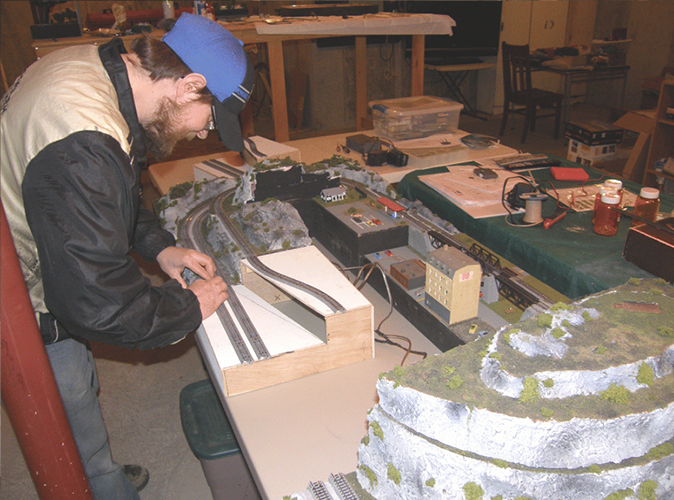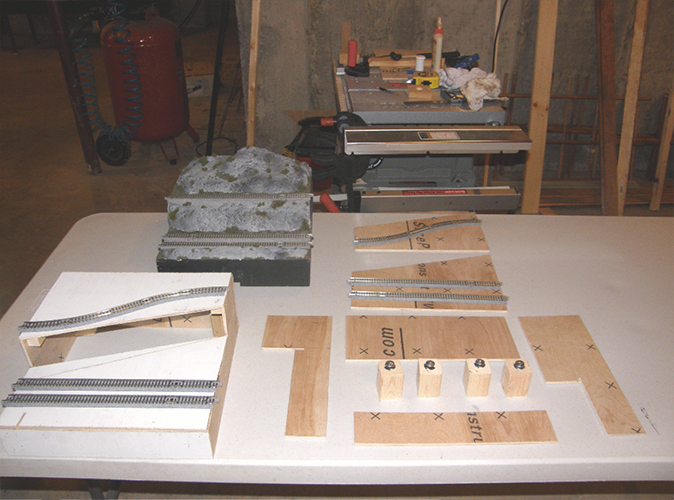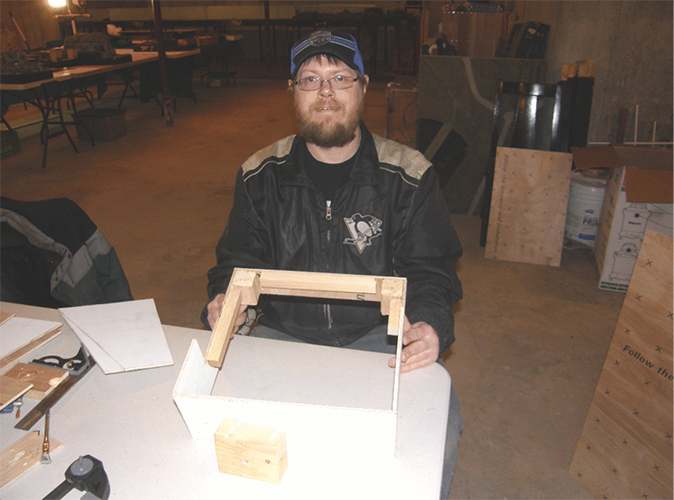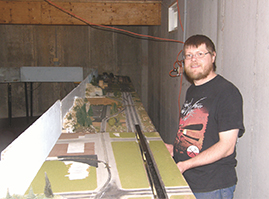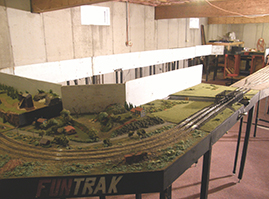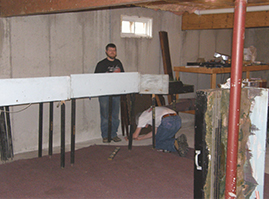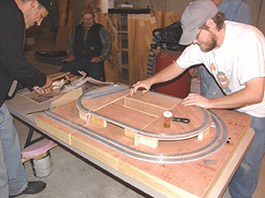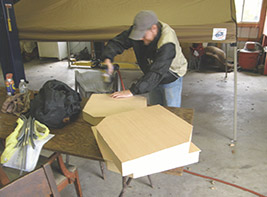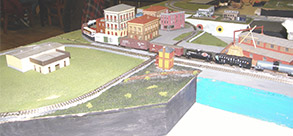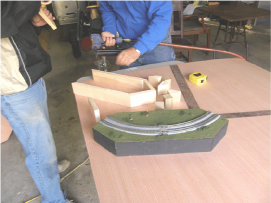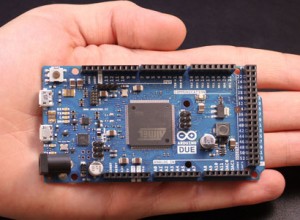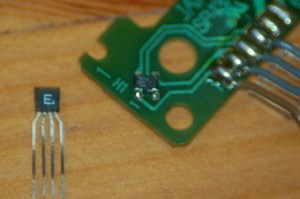 Loading…
Loading…
Scratchbuilding
Get to work!
From the Desk: March 2015
March is again upon us and there is very little model railroad activity in the works. The end of the month brings RailRun, an annual activity in the Boston area where many FUNTRAK club members have had the good fortune to be participants in the past. A large number of the local model railroad layouts are opened up to a select group of modelers for operating sessions over a weekend at the end of the month. This year, Brian, along with club members Lorenzo Franchi and John Fleming, as well as our Canadian neighbor David
King, have been invited to attend this happening. Participation in this annual event often leads to many ideas about other ways of operating model railroads, including club layouts.
When there is actually a purpose for the trains other than to just go in a circle, it makes for much more interesting train running. FUNTRAK continues attempting to
incorporate this idea of operations into the T-trak displays. This has been a slow and ongoing task, but progress is being made and hopefully will be more successful in the future. The RailRun experience provides encouragement for club members to develop more operational ideas for use in our club layouts when the opportunity arises.
The idea of having a purpose has lead to the construction of specific modules that have particular industries on them to support railroad usage and encourage operations. With industry, schedules, and a purpose, it is easier to develop a plan for operations. The one-trak concept has been a work in progress for nearly two years now and lends itself greatly to supporting the operations concept with the t-trak modules. Although DCC adds to the enjoyment of operations because of the added features allowing trains to operate without having to accommodate conventional DC methods, FUNTRAK’s one-trak modules are being constructed with conventional DC power in mind. This allows anyone to use their own motive power regardless if it is DCC equipped or conventional. All DCC locomotives have a conventional feature while not all conventional locomotives can run on DCC. A great advantage of T-trak is that no two setups need ever be the same and the diversity of modules means operations will be ever changing to maintain more interest and challenge for operators. With all of these things in mind, FUNTRAK has managed to keep ahead of the game by planning ahead in the design of many of the T-trak modules, anticipating the inclusion of the modules in a layout design to accommodate operations using the features mentioned. These considerations have made FUNTRAK‘s layouts both interesting and fun for both operators and viewers.
The annual “Valley Rail Sights” club show coming up in April should prove to be more fun than ever this year if many of these operational ideas are included when setting up the T-trak layout. Come onout and join the fun.
Brian
Family Fun Center Re-Visited!
One of our favorite locations to run trains, we always have a good turn out at the Family Fun Center in Mohawk.
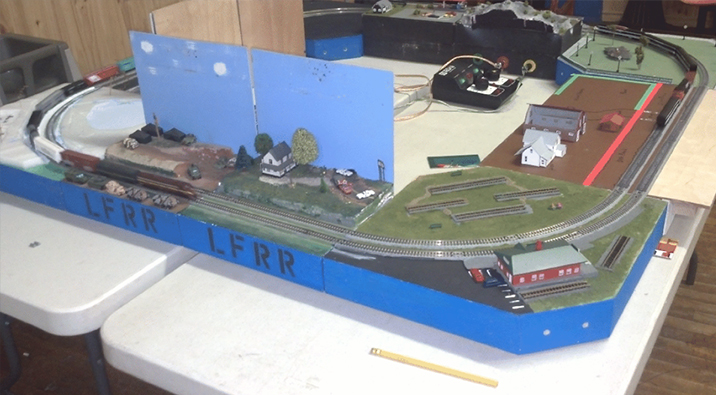
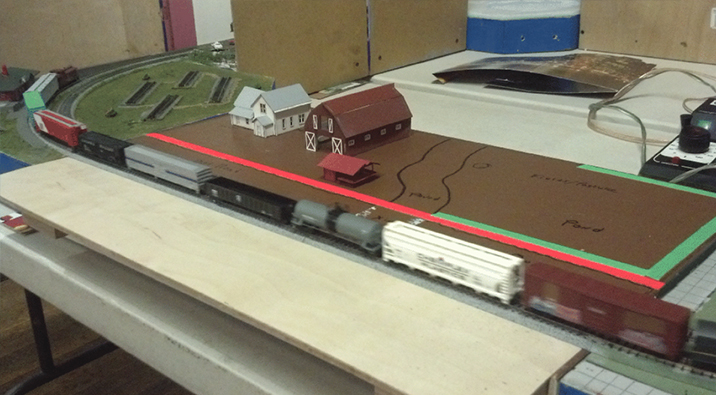
Perserverance Pays!
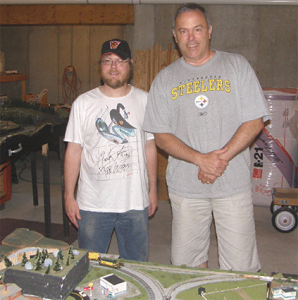 FUNTRAK‘s automatic reverse loop is finally finished and operational, thanks to our Australian club member, Mark Bean. Mark’s diligence and John’s scenic abilities make great additions to FUNTRAK’s arsenal of t-trak modules. After over a year of research and development, it was gratifying to finally succeed in reaching the desired goal.
FUNTRAK‘s automatic reverse loop is finally finished and operational, thanks to our Australian club member, Mark Bean. Mark’s diligence and John’s scenic abilities make great additions to FUNTRAK’s arsenal of t-trak modules. After over a year of research and development, it was gratifying to finally succeed in reaching the desired goal.
Working together!
T-Trak Progression
|
The photos at left illustrate the before and after of the t-trak modules FUNTRAK has built over the past few years. These modules are a testament to the remarkable talent available from FUNTRAK members in recreating a visual spectacle everyone can appreciate. Lorenzo comes up with some new and exciting ideas, John assists in scenicking the modules with his creative talents, and FUNTRAK members reap the benefits of the public’s admiration for these terrific displays. The combination of innovation, creativity, and talent is a winning situation for FUNTRAK and those fortunate enough to see these fabulous works of art. |
Time to get to work!
Lots of hard work goes into building train layouts. But, our club members are so into their hobby that it’s not even like “work” at all!
Construction Season
FUNTRAK members Lorenzo Franchi and Jim Domser contemplate the new one-trak modules under construction. These new modules will add variety and some different concepts to the ever expanding t-trak modular system. This will allow for linear layouts and make the inevitable circle unnecessary if so desired. Of course, the one-trak tee will also allow the one-trak concept to be tied into the regular t-trak layout making all kinds of new innovative designs possible.
From the Desk: April 2013
Innovation! What a great idea. Unfortunately, as Edison said, “Genius is one percent inspiration and ninety nine percent perspiration.” So I am ambitiously pursuing my brilliant idea of how to do a simple job with the least complicated solution. Developing a means of having a train go down a single track, traverse a reverse loop, and return to its origin with minimal human intervention. Seems simple enough, doesn’t it? Whoa! Let me tell you what I have done so far and what I foresee as yet to come in this “simple” endeavor.
First, I had to overcome the skepticism of my fellow helpers who all claim this is way too complicated to be done simply and efficiently. To do this I sent a preliminary drawing out and asked for help. This at least convinced them that I was serious, even if they thought I was still crazy. Now that the communication exchange had begun, the ideas and answers began to pop up. Some of the simple things that needed to be solved included how to automatically change the polarity of the tracks in the loop without having to stop the train, how to notify the engineer when the main throttle direction should be changed, how to protect the mainline from having the train go against itself when coming out of the loop, and the list goes on. Control of these functions is dependent upon knowing the location of the train at any given time. Here we go again!
Now I have to find some way of sensing the position of the train and relaying it to some sort of control mechanism. I decided that an Arduino microcontroller should do the job of providing a control mechanism for all the operations necessary to control the power supply for the trains in this section. I also decided to see if Hall effect sensors would work as the means of providing the necessary position indicators to feed this information to the Arduino. Again, simple ideas but complicated answers. How many Gauss does an electric train motor radiate? What, you say. So did I. I need to know something about these little motors in order to use the Hall sensors as a sensing mechanism.
How many relays does it take to control the polarity of the power being fed to the track? Simple suddenly doesn’t seem so simple any more. To answer these questions, I ordered the parts I would need to complete my experiment and test my brilliant ideas. Now all I have to do is wait for them to arrive.
Meanwhile, I am trying to figure out the magnetic pattern of my little locomotives so I know how to position the Hall sensors in the track, if in fact they will work at all, to detect the little trains. If, and that is a BIG if, this all works out as planned, I then need to delve into programming the Arduino to control the necessary hardware to accomplish my end desire. As you can see, what Edison was alluding to is that as each solution for a simple problem comes up, so does another problem required to be solved to support the original idea. Nothing is as simple as it at first appears.
I will keep plugging away at my problem and eventually either come up with a satisfactory solution or realize that it “simply” cannot be done.
Until next time, keep training.
Brian

